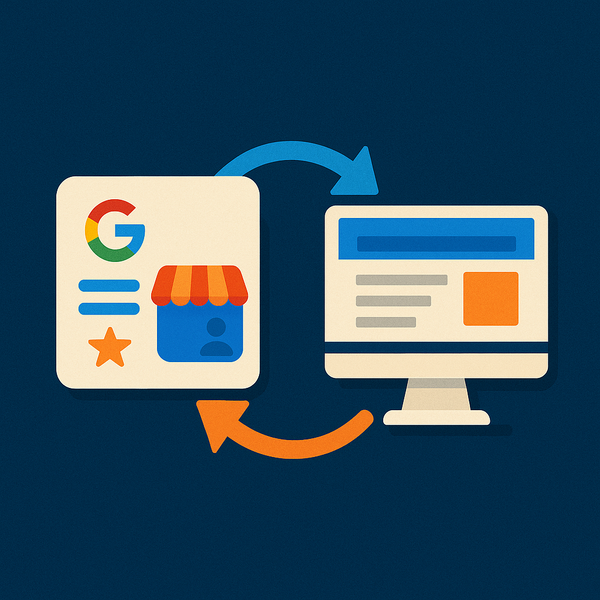Staying Ahead of AI Trends Without Losing Your Mind
Feeling whiplash from nonstop AI headlines? Learn a simple framework to track emerging AI trends, filter the hype, and adopt only what fits your business—without burning out or blowing the budget.

Open your favorite news feed and you’ll see it: AI breakthroughs everywhere—new models, new tools, new buzzwords.
Do you need all of them tomorrow?
Probably not. But ignoring trends entirely isn’t wise either. As futurist Alvin Toffler said, “The illiterate of the 21st century will not be those who cannot read and write, but those who cannot learn, unlearn, and relearn.” The sweet spot lies in learning just enough to stay nimble, without drowning in FOMO.
Below is a straightforward system to help small‑business owners track AI developments, separate shiny objects from real opportunities, and pilot new tech with confidence (and sanity).
Build Your “AI Radar” in Three Layers
1. Core Sources (High Signal, Low Noise)
Pick two or three reliable outlets—think MIT Technology Review, The Verge’s AI section, or an industry‑specific newsletter. These should give you concise summaries of major releases, funding rounds, and regulatory moves. Skim once a week; note anything that directly touches your niche.
Tip: Create a dedicated email folder called “AI intel.” Forward noteworthy articles there so they don’t clutter your main inbox.
2. Community Filters (Human Curators)
Join one Reddit or LinkedIn group where professionals share real‑world experiments. Look for communities like r/smallbusiness or a Slack channel tied to your trade association. Fellow business owners often post unvarnished wins and fails—perfect for reality checks.
Would you rather learn a costly lesson yourself, or read someone else’s cautionary tale first?
3. Trend‑Tracking Tools (Automated Alerts)
Free services such as Google Alerts or Feedly AI can ping you when keywords like “AI bookkeeping tool” or “local business chatbot” appear in the news. Limit alerts to must‑know topics; otherwise the deluge will defeat the purpose.
The 4‑Question Litmus Test
Before you chase a trend, run it through these filters:
- Relevance: Does it solve a pain point you actually have?
- Feasibility: Can you implement it with current staff and budget?
- Credibility: Is there a reputable vendor or open‑source community behind it?
- Risks: What happens if it fails—lost money, data, or reputation?
If a trend can’t clear at least three of four flags, park it in an “idea parking lot” for later review. Remember, opportunity cost is real.
Pilot, Don’t Plunge
Start Small
Choose one process—say, drafting social‑media captions—and test an AI tool for two weeks. Keep a baseline: time spent, quality scores, or engagement metrics. Compare post‑pilot data to see if the gains justify further rollout.
Set a Budget Cap
Allocate a fixed “innovation fund” each quarter. Once it’s spent, no more new tools until you measure ROI (see last week’s blog for details). This guardrail prevents subscription creep.
Involve the Team Early
Even if you’re a one‑person shop, loop in contractors or advisors who touch the workflow. Resistance drops when people help shape the experiment instead of having a new system dropped on their laps.
Stay Legal and Ethical
New AI regulations pop up as fast as new models. Keep tabs on:
- Data privacy laws (GDPR, CCPA)
- Copyright issues (especially for generative images or text)
- Bias audits if your AI makes hiring or lending decisions
“Move fast and break things” might work for tech giants testing social apps, but insurance, healthcare, or finance can’t afford that luxury.
When to Double Down—or Walk Away
- Double Down if the pilot shows ≥ 20% improvement in a key metric (time saved, revenue gained) and team feedback is positive.
- Walk Away if costs exceed benefits or the tool introduces new headaches (data mishaps, unhappy customers). Cut losses early; sunk‑cost fallacy is real.
Is it brave to soldier on with a dud, or smarter to pivot quickly? Your balance sheet votes for the latter.
Build a Culture of Continuous Learning
Schedule a 30‑minute “AI coffee chat” once a month. Share one takeaway each: a cool tool, a cautionary article, or a quick demo. Low‑pressure, high impact. Over time, this ritual normalizes experimentation and keeps everyone—yourself included—comfortable with change.
Final Thoughts
Keeping pace with AI doesn’t mean chasing every headline. Curate your information sources, vet trends with a clear litmus test, and run controlled pilots. You’ll capture real benefits while sidestepping shiny‑object syndrome.
Need help filtering hype from genuine opportunity—or designing a no‑stress pilot program? Managed Nerds can create a tailored trend‑tracking and testing roadmap so you’re always ahead of the AI curve without losing sleep (or dollars).





